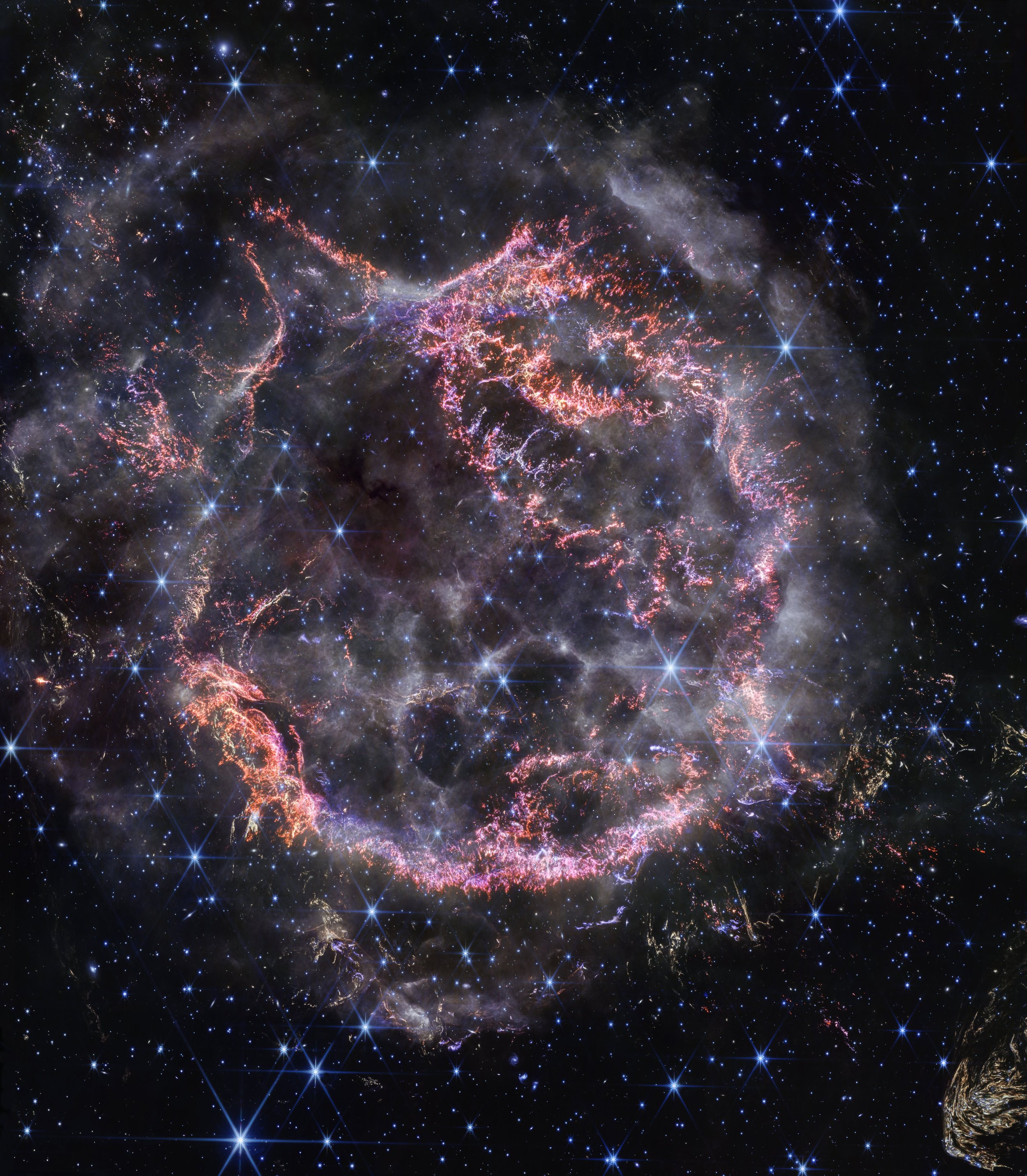Isn’t this just an astonishing image? We thought we knew Cassiopeia A, but we were wrong.
“Webb’s NIRCam (Near-Infrared Camera) view of Cas A displays a very violent explosion at a resolution previously unreachable at these wavelengths. This high-resolution look unveils intricate details of the expanding shell of material slamming into the gas shed by the star before it exploded.” Learn much more about the image and the history of our study of Cas A, go here: https://esawebb.org/news/weic2330/







